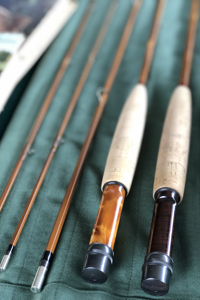
The Taransky Bamboo philosophy is simple: to make each rod to the best of my ability, using the highest quality materials and components. The rods are made to fish, but they are also made to be beautiful.
Fine hand tools are used, to control every detail of the process. While focusing on traditional, time proven methods, I am also passionate about constant learning and improvement.
Rods are made in small batches of 1-4, to optimise workflow. Each rod typically takes 40 to 60 hours up to make, depending on the configuration and design. Bespoke and Presentation rods may take twice this long or more.
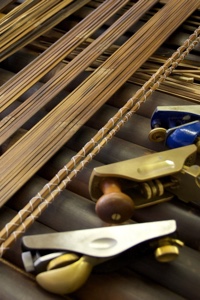
There is an old saying - "we stand on the shoulders of giants" - we only progress because of the body of work and knowledge passed on by those that have gone before us. This is true for most things in life, and it is certainly true of bamboo rod tapers.
Since 2004 I have constantly worked on developing and refining tapers, but the foundations have come from great rodmakers of the bygone era. In my view, most of the best tapers came from the golden era of American rodmaking - through the middle of the 20th century. I have been influenced by tapers from makers including Paul Young and Lyle Dickerson, rods made for Lee Wulff, and even underrated makers like Francis "Digger" Degere. I have also been inspired by several Japanese rodmaking masters including Ushu Nakamura and Naoto Shibuya.
My interest in tapers is driven by fishing requirements: analyse a fishing situation or challenge, and find, refine or develop a rod to suit it. Of course, many rods can prove to be versatile in a number of scenarios, but for me, "fishing first" is the only way to make the best rods.
Casting is a huge part of fishing, and I've been very lucky to have some of Australia's (and the world's) best casters help my understanding of rod dynamics, and have input into rod design, as well as helping my own casting. Foremost is Peter Hayes. He has made a huge contribution in promoting bamboo as a high performance fly rod material. I've also been grateful to have feedback and input from others including Tony Loader, Matthew Howell, and Simon Zarifeh. From Japan, Tomonori "Bill" Higashi, Naoto Shibuya, Kenshiro Shimazaki, and others have helped me to appreciate dynamic and astonishingly effective Japanese casting and fishing styles.
In my own casting, I am a FFI (Fly Fishers International) CCI (Certified Casting Instructor), having passed my exam using a bamboo rod (of course!), and am working on achieving my MCI (Masters) accreditation.
The Rod Range page offers a refined list of favourite tapers. These cover a wide range of fishing styles and angling scenarios. Many reflect my own passion for dry fly sight fishing, where fast, accurate and delicate presentations are required. However, I also offer rods that are suited to other techniques including weighted nymphing, dry/dropper, two-handed swinging, lake fishing with wet flies and even saltwater.
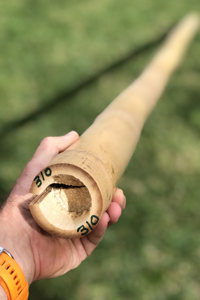
Tonkin Cane
Tonkin Cane is recognised as "The Rodmaker's Bamboo". Known for it's dense power-fibre structure, high modulus and resilience, it has been the choice for making bamboo rods for over 100 years.
Since 2002, I have steadily acquired the highest quality Tonkin Cane that I could source. Much of my bamboo came from Andy Royer, at the Bamboo Broker, before he sadly passed away. Andy was renowned for selling superb rodmaking bamboo. Over a 10 year period, I was able to procure a lifetime supply of his premium culms. Predominantly AA and "Marilyn" grade culms, these were individually selected by Andy for power-fibre density, straightness and lack of surface markings.
Madake Bamboo
Rodmakers in Japan use Madake Bamboo (and other species) in addition to Tonkin Cane. Madake has a lower modulus than Tonkin, and can be used to make very supple, fluid rods, ideal for long leader fishing and drag free drifts in complex currents.
After visiting Japan in 2013, I began sourcing Madake bamboo, and use it to make a range of full actioned, smooth, but deceptively powerful Japanese style rods.
Culm Selection
Each of my hundreds of culms have key attributes stored in a database. When choosing a culm for a rod, these properties are searched, to narrow down the selection to a few candidate culms. These culms are then inspected to match the best culm to suit the rod being made.
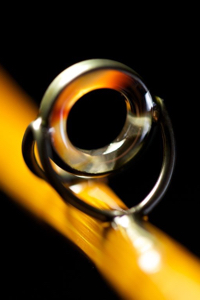
The finest components and materials are used on Taransky Bamboo rods:
- Reelseat Hardware: CSE and Hariki
- Reelseat spacers: Exquisite burls and figured hardwoods, including Mallee Burl, Tasmanian Fiddleback Blackwood, Huon Pine Burl, Ringed Gidgee and Swamp Kauri
- Ferrules: CSE, Hariki and bamboo
- Stripping guides: Brazilian Agate and TiCH coated
- Snake guides: TiCH coated and Titanium Alloy
- Silk: YLI
- Cork: Top FLOR from Portugal
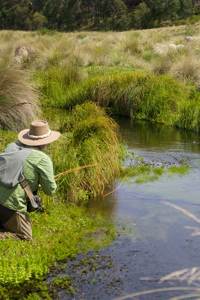
Making bamboo fly rods has been my full-time business since 2004. All of my working life since then, and much of my own personal time, has been devoted to making, developing and testing my rods. It is what I do and who I am.
From 2004 to 2021, my primary workshop was based in Queanbeyan, in the Snowy Monaro Blue Ribbon Trout region of NSW, Australia.
In 2015, I added a workshop in Tasmania, Australia, at Peter Hayes Lodge on the banks of Brumby's Creek.
In 2021, I moved my home workshop to Taihape, NZ, on the banks of the Hautapu River. My Australian workshop in Tasmanian at "Hayes on Brumbies" will be retained as my base for Australian Rodmaking Classes and other Australian Rodmaking activities.
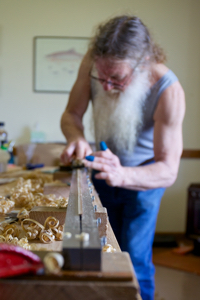
In 2015 I began running Annual Rodmaking Classes at Hayes on Brumby's in Tasmania. Limited to a maximum of four students per class, all aspects of rodmaking are covered. Students live in for 5 days, and make a rod of their own to take home with them.
To date, over 40 students have attended: from teenagers to people in their 80's and all walks of life. Many have had no previous woodworking or other relevant experience. Every one has left with a rod to be proud of and many have continued on with their new skills to make more rods of their own.
I enjoy teaching and sharing the rodmaking craft equally with making rods of my own, and look forward to future classes. From 2022 onwards, Australian Classes will continue to be held in Tasmania and New Zealand Classes will be based in Taihape.
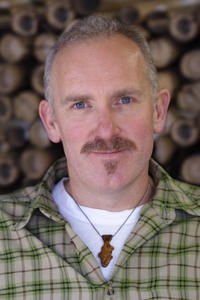
Rodmaking Biography
In 2001, during a 12 month work posting in the USA, I met Jeff Wagner, and attended one of his bamboo rodmaking classes. It was literally a life changing moment. We remain great friends to this day. By 2004, rodmaking had consumed my life to the point that I had quit my former career to become a full-time maker.
In my early days of rodmaking, there were probably less than ten other people in our Australian bamboo "community" to share ideas with. Now we have closer to a hundred, and the Annual Cressy Cane gathering, founded by David Hemmings in Tasmania is a focal point. I've really enjoyed being a part of it and watching it grow over the years. Far from being a "dying craft", it's flourishing beyond my wildest expectations.
Over the years I've made hundreds of rods, in over a hundred taper variations, but there is always more to discover and improve on. I've travelled internationally to learn as much as I can - to gatherings in the USA (Greyrock - Michigan) and Canada (Corbett - Kamloops - British Columbia). In recent years, Japanese rodmaking and advanced fly fishing techniques have had a profound impact on my own rodmaking. I've travelled there three times to learn from a number of their master craftsmen and anglers. With my recent move to New Zealand, I'm excited about the prospect of using Japanese style rods and fishing methods to tackle challenging fishing situations here.
During the first ten years of my business, I showed many people the basics of rodmaking on an informal basis, and referred a number of Australians to Jeff Wagner's wonderful classes. Over time, it became clear that there was a demand within Australia for similar courses there. So in 2015, I began running classes of my own, modelled on Jeff's comprehensive, structured format, based at Peter Hayes lodge on Brumby's Creek in Tasmania.
Personal Biography
I am a devoted fly angler with over 40 years of experience fly fishing for trout. My passion is dry fly sight fishing for trout in streams. I am committed to catch and release, and preservation of the environment and trout and their habitat.
I have fly fished widely in both salt and fresh water, including the Australian mainland, Tasmania, New Zealand, the Australian Tropics, Southern Saltwater, Lord Howe Island, Kiritimati (Christmas Island), and the USA. My wife Miri is also a dedicated and talented fly fisher.
I grew up in Adelaide, where my earliest fishing experiences were based around riding my push bike to Port Adelaide and the suburban coastline to fish for bream, mullet, whiting, garfish and other "bread and butter" species. Even before my teens, I enjoyed tackle crafting, making floats and lures in my dad's gunsmithing workshop, moving on to build rods from glass and graphite blanks. Dad was a skilled gunsmith, and though he wasn't an angler, was always happy to share skills, tools and time with me for my own "projects". He was also a triple Olympian, so I learnt first hand the hard work and dedication required to achieve goals in life.
Through reading, I became fascinated by the idea of trout fishing, and fly fishing in particular. It was a copy of David Scholes "Fly Fishing in Australia" in my school library that sent me "down the rabbit hole". As a thirteen year old, I wrote to David to tell him how much I enjoyed his book, and he very kindly responded with a warm and encouraging letter, which remains one of my most treasured possessions to this day.
My first fly rod was bamboo. From memory it cost $14 - many weeks of my pocket money. A 3-piece in a bright orange nylon bag from the local tackle store, it was pretty rough to say the least. It had open glue lines, cheap chrome ferrules which fell off and had to be re-glued, and it had some strange flat spots and sharp bends in it when loaded up. Having said that, it cast OK and actually felt pretty good to me too. I caught my first trout on fly with it, a rainbow in the Torrens Gorge on a Whickham's Fancy, under the tutelage of family friend and early mentor, Terry Conway. I'm eternally grateful to him for taking me under his wing, and I can still remember the heart-pounding excitement and pride in catching that fish.
In time, I joined the South Australian Fly Fisher's Association. Through them I discovered a vibrant angling group and a diverse but challenging trout fishery in the country surrounding Adelaide. Small, bushy streams and educated trout demanded tight casting and pinpoint presentation. During this time, I was introduced to quality bamboo rods by Ray Brown, and have been passionate about cane ever since. As a member of SAFFA I also had the opportunity to assist with running the trout hatchery, where I learnt about hatching and rearing trout from ova, effective stocking methods, and participated in stream and environmental improvement activities.
I moved from Adelaide to Canberra in 1992, after completing a Batchelor of Science Degree at Adelaide University, to begin a career in IT. The move brought me to the Blue Ribbon Snowy Monaro trout fishing region, which I took full advantage of.
In 2021, Miri and I moved to NZ. I'm incredibly excited to be here, exploring new fisheries and developing and refining rods to suit them. A current focus is on channelling Japanese style casting and rod actions into a range of rods for New Zealand conditions.
When not making rods or fishing, you can find me learning Japanese, keeping fit, meditating, and most recently, getting back into golf and learning to play the banjo.